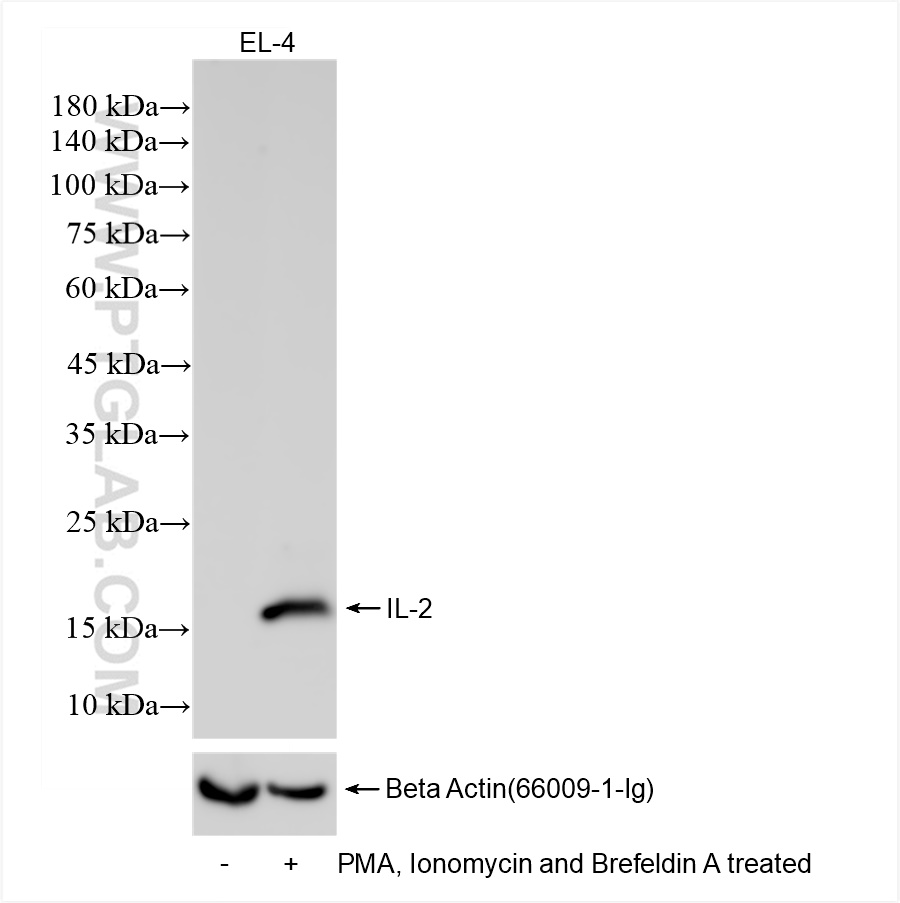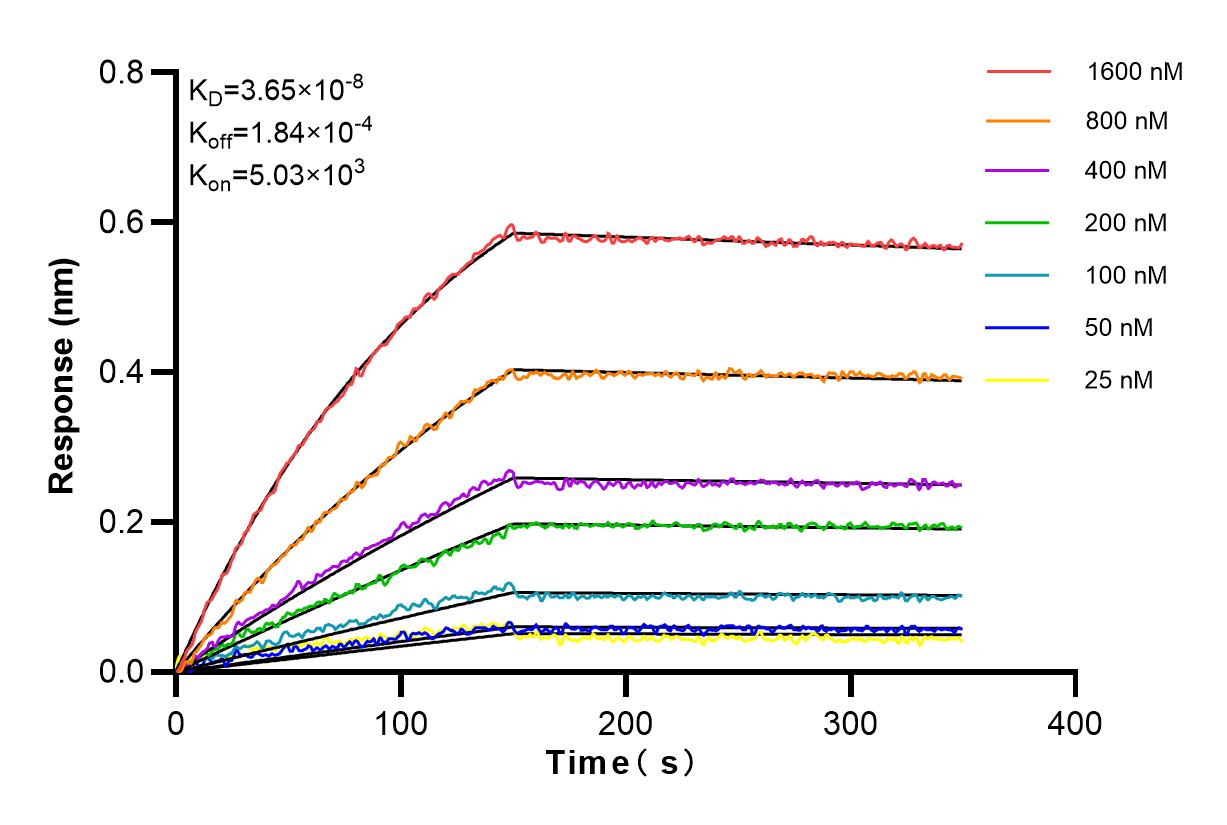验证数据展示
经过测试的应用
| Positive WB detected in | PMA(50ng/ml)+iono(500ng/ml)共6h换液+Bref A 18h EL-4 cells |
推荐稀释比
| 应用 | 推荐稀释比 |
|---|---|
| Western Blot (WB) | WB : 1:500-1:2000 |
| It is recommended that this reagent should be titrated in each testing system to obtain optimal results. | |
| Sample-dependent, Check data in validation data gallery. | |
产品信息
83547-3-RR targets IL-2 in WB, ELISA applications and shows reactivity with mouse samples.
| 经测试应用 | WB, ELISA Application Description |
| 经测试反应性 | mouse |
| 免疫原 | Fusion Protein 种属同源性预测 |
| 宿主/亚型 | Rabbit / IgG |
| 抗体类别 | Recombinant |
| 产品类型 | Antibody |
| 全称 | interleukin 2 |
| 别名 | Il2, Interleukin-2, interleukin 2, Il 2, 240358B1 |
| 计算分子量 | 19 kDa |
| 观测分子量 | 15 kDa |
| GenBank蛋白编号 | NM_008366 |
| 基因名称 | IL-2 |
| Gene ID (NCBI) | 16183 |
| RRID | AB_3671166 |
| 偶联类型 | Unconjugated |
| 形式 | Liquid |
| 纯化方式 | Protein A purification |
| UNIPROT ID | P04351 |
| 储存缓冲液 | PBS with 0.02% sodium azide and 50% glycerol , pH 7.3 |
| 储存条件 | Store at -20°C. Stable for one year after shipment. Aliquoting is unnecessary for -20oC storage. |
背景介绍
Interleukin-2 (Il2) is a protein initially identified as a T cell growth factor. Il2 is mainly produced by activated CD4+CD25- (helper) T cells, and induces the proliferation of these and others cells like CD8+ T cells, B and NK cells. For this reason, it has been used to treat immune-deficiencies like HIV, and induce immune response against tumors. Nevertheless, it has been shown that Il2 also acts as the main growth factor of CD4+CD25+ Regulatory T cells. Interleukin 2 mediates its functions in the target cell through the interleukin 2 receptor (Il2R). Il2R is a multimeric functional protein consisting of three different chains: Il2Rα, Il2Rβ and γc.
实验方案
| Product Specific Protocols | |
|---|---|
| WB protocol for IL-2 antibody 83547-3-RR | Download protocol |
| Standard Protocols | |
|---|---|
| Click here to view our Standard Protocols |

